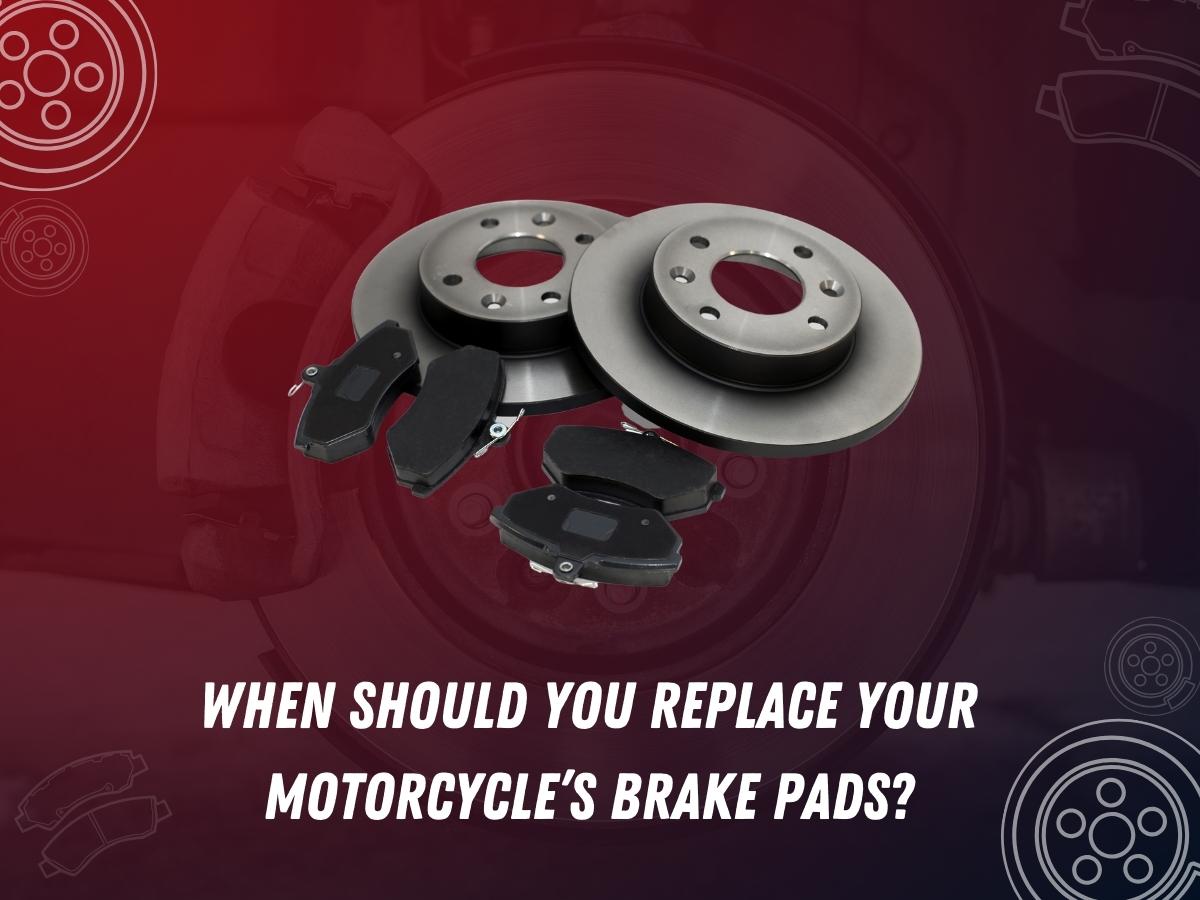Knowing when to replace your motorcycle’s brake pads is crucial for maintaining optimal braking performance and ensuring rider safety. Here are some signs and guidelines to help you determine when it’s time to replace your motorcycle’s brake pads:
Signs It’s Time to Replace Your Motorcycle Brake Pads
- Thickness Check:
Regularly inspect the thickness of your motorcycle brake pads. Most manufacturers provide a minimum thickness specification. If your brake pads approach or fall below this limit, it’s time to replace them. You can also check the online motorcycle parts store for best motorcycle brake pads.
- Visual Inspection:
Examine the brake pads for visible signs of wear. If you notice uneven wear, cracks, or a glazed appearance on the pads’ surface, replacement may be necessary. Damaged or deteriorated brake pads compromise braking efficiency.
- Squealing or Squeaking Noises:
Unusual sounds, such as high-pitched squealing or squeaking when you apply the brakes, could indicate worn-out brake pads. This noise is often caused by wear indicators that become exposed as the pads wear down.
- Reduced Braking Performance:
If you notice a significant decrease in braking performance or a longer stopping distance, it may be a sign that your brake pads are no longer effectively gripping the brake disc. This can compromise your ability to stop quickly and safely.
- Vibrations or Pulsations:
Vibrations or pulsations felt through the brake lever or pedal during braking could be a sign of uneven brake pad wear or warping of the brake disc. In such cases, both the brake pads and the brake disc may need attention.
- Warning Lights:
Some motorcycles come equipped with brake pad wear sensors that trigger warning lights on the dashboard when the pads are nearing the end of their life. If your motorcycle has this feature, pay attention to any warning lights and address the issue promptly.
- High Mileage:
As a general guideline, consider replacing your brake pads every 15,000 to 20,000 miles, but this can vary depending on factors like riding conditions, your riding style, and the type of brake pads used.
- Riding Conditions:
If you frequently ride in challenging conditions, such as heavy traffic, mountainous terrain, or off-road environments, your brake pads may wear out more quickly. Adjust your replacement schedule accordingly based on your specific riding conditions.
Common Mistakes to Avoid When Replacing Your Motorcycle’s Brake Pads
Replacing your motorcycle’s brake pads is a critical aspect of maintenance that directly impacts your safety on the road. While it’s a routine task for many riders, there are common mistakes that should be avoided to ensure a smooth and effective brake pad replacement process:
- Neglecting Regular Inspections:
Waiting until your brakes show signs of significant wear or reduced performance before inspecting them is a mistake. Regularly check your brake pads for wear and other issues to catch potential problems early.
- Incorrect Brake Pad Type:
Using the wrong type of brake pads for your motorcycle can lead to reduced performance and safety risks. Ensure you choose brake pads that are compatible with your bike’s make and model, as well as your riding style.
- Incomplete System Inspection:
Focusing solely on the brake pads and neglecting other components of the braking system, such as brake fluid, brake lines, and the brake disc, is a common oversight. A comprehensive inspection ensures the entire braking system is in good condition.
- Improper Bedding-In Process:
After installing new brake pads, it’s crucial to properly bed them in. This process involves gradually applying the brakes to generate heat and transfer a layer of friction material onto the brake disc. Skipping or improperly performing this step can result in reduced braking efficiency.
- Ignoring Manufacturer Recommendations:
Each motorcycle model and brake system may have specific recommendations from the manufacturer regarding brake pad replacement intervals, types of brake pads, and bedding-in procedures. Ignoring these recommendations can compromise safety and performance.
- Rushing the Job:
Replacing brake pads requires attention to detail. Rushing the process can lead to mistakes, such as improper installation or overlooking critical steps. Take your time and follow the manufacturer’s guidelines and service manual.
- Using Worn Brake Discs:
Installing new brake pads on worn or damaged brake discs can lead to uneven wear, reduced braking performance, and increased risk of accidents. Always inspect and, if necessary, replace the brake discs when changing brake pads.
- Overlooking Brake Fluid Replacement:
Brake fluid plays a crucial role in the braking system. Neglecting to replace old or contaminated brake fluid during a brake pad replacement can affect braking performance and contribute to brake system issues.
Concussion
Replacing brake pads in a timely manner ensures that your motorcycle’s braking system remains in top-notch condition, providing the stopping power needed for a safe and enjoyable ride.
By being mindful of these common mistakes and following proper procedures outlined in your motorcycle’s service manual, you can ensure a successful brake pad replacement that enhances both safety and overall riding experience.



